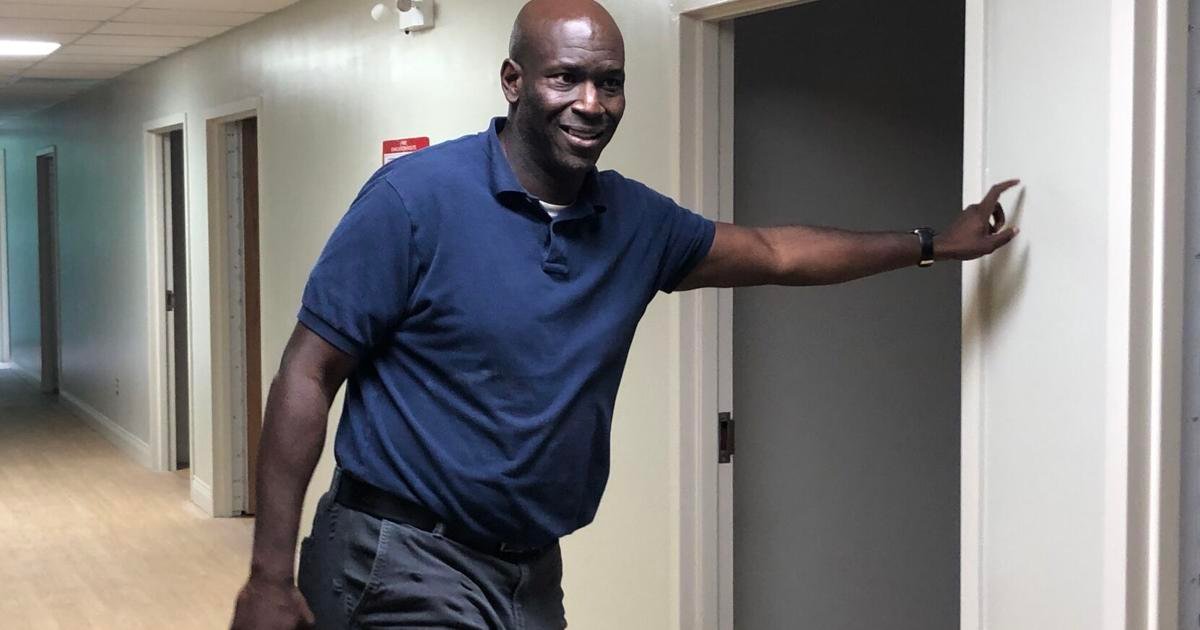[ad_1]
GREENUP With substance abuse disorder on the forefront of daily life in this corner of Appalachia, Addiction Recovery Care’s Community CEO Johnathan Frazier says its time to intervene in a big way.
By utilizing the shell of a building on what used to be Our Lady of Bellefonte Hospital’s campus, Frazier and his team are gaining ground on restoring a 40-bed state-of-the-art psychiatric unit to quickly intervene for those most at-risk with 24/7 on-unit access to therapist and case workers.
On Monday morning, Frazier led The Daily Independent through the facility, aiming to have a grand opening in November.
Frazier said the motivation behind the project is to restore a need that was removed from the community with the closing of the previous hospital.
By utilizing nationally compiled data, Frazier says in treatment, ARC often finds that a patient’s issue is not substance abuse itself, but an underlying mental health condition that has gone unaddressed.
“Fifty-six to 60% of patients have a mental health diagnosis that is untreated,” Frazier said. “We can support these people right here.”
Frazier emphasized the importance of fighting for the ongoing restoration of an individual’s life — despite their previous substance use most likely serving as their only mental health coping mechanism.
At the new psychiatric facility, Frazier says a patient isn’t simply treated at admission.
“One doesn’t walk in and become un-sick; this is a place to reduce imminent danger,” Frazier said, adding the goal is to stabilize and create a treatment plan before a patient is ever discharged.
With a stair-step phased program, ARC promotes a crisis-to-career pipeline for their clients.
The initial step is crisis intervention (the goal of the new facility), which according to ARC’s website, includes supervised detox, one-on-one group counseling, a personalized treatment plan and 24/7 addiction specialist support.
A majority of patients admitted, Frazier said, will be in crisis mode, a term used when an individual is experiencing actions or feelings that can include dangerous behaviors that can cause a risk of hurting themselves or the people around them.
According to Frazier, the facility will quickly assess and identify those behaviors and classify the patient as they see fit.
If an individual doesn’t meet the criteria to be treated at ARC, such as serious medical need, Frazier said they won’t be turned away, as the facility aims to develop a working relationship with surrounding hospitals and agencies to get people the help they need — wherever suits them best.
The new facility isn’t one a person would picture when they imagine a lockdown psychiatric unit ,either.
Frazier says the design was intentional and a vital role in restoring overall wellness.
While the “block” is tended to by security and a central control-like room, the patient’s rooms, hallways and group areas have access to view the outdoors with floor-to-ceiling picture windows.
The goal of the new facility is to remove the stigma of a psychiatric facility by exposing patients to non-intrusiveness with a non-institutionalized feel.
Frazier gave credit to the previous architects, saying the flow and design of the building is “ahead of its time.”
“We believe in letting the light in, to let light out,” Frazier said gesturing outside to the nature views. “It lets the people see their tomorrow.”
Despite the need in the community, Frazier says there has been “naysayers” who fear the project could cause a land value decrease or a community disturbance, both enhanced by apprehension toward what the facility could look like.
Frazier said in more than 20 years in his profession of neuropsychiatric facility management, he’s yet to experience any of the above.
To remove additional skepticism, Frazier said he hopes to have the entire process of adding the facility as transparent as possible.
“People think land value and the quality of life goes down and it’s the opposite,” Frazier said. “We don’t change the culture (of an area), we enhance it.”
Frazier said ARC inhabiting the old Bellefonte lands will add 250 jobs back to the area — including doctor and health care professional positions, leading families to settle back into the area after the uproot and closing of the previous hospital.
Frazier reiterated the facility is patient-focused and secure for the community.
A patient’s level of reasonability and safety must be assessed before they could ever simply walk out of the facility, according to Frazier.
“Freedom of movement is not possible,” Frazier said, if a patient is deemed a danger to themselves or others.
“I’ve yet to see an emergent outcome,” Frazier said of other similar projects he’s headed.
Frazier said he believes the opening of this facility will be watched on a national level with ARC’s unique approach of addressing crisis management first and extensive long-term care to follow.
The new facility accepts all genders and gender identities, faith backgrounds and diversity.
Once the facility begins accepting patients, those in need can access help 24/7-365 through a crisis hotline number (988) or through walk-ins and assessment and intervention will begin at first contact, Frazier said.
[ad_2]
Source link



